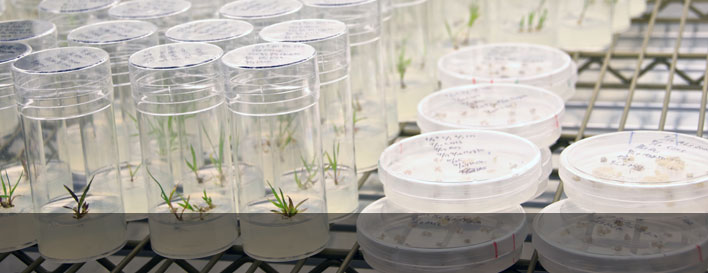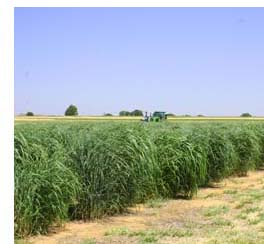Dr. Ajay Kumar


“To best utilize our limited resources and maintain our standard of living, there is no alternative but to make ourselves less dependent on non-renewable resources.”

Dr. Kumar's research involves thermochemical conversion of biomass for biofuel production. Gasification of biomass to generate producer gas suitable for fermentation to ethanol is the main focus of the research.
His primary research goals are:
- Improve gas composition
- Decrease the tar level
- Increase overall efficiency
- Develop mathematical models to reliably predict the product composition.
Both experimental and modeling approaches are used to develop more efficient and predictable gasification processes for a wide variety of feedstocks.
Current projects include study of the effects of gasification operating conditions, evaluation of in-bed and secondary-bed catalysts, and investigation of gasification reaction kinetics.
- Thermochemical gasification of biomass for biofuel production
- Application of catalysts for improved yield and composition of producer gas from gasification
- Mathematical modeling of processing of biological materials
- Techno-economic evaluation of biofuel conversion processes
Pictured (above/right): Dr. Kumar's research will aid in the development of more efficient and disease-tolerant switchgrass plants. (Photo Credit: OSU Agricultural Communication Services)
Bold items indicate OK EPSCoR-supported research
- Mudinoor, A., D. Bellmer, L. Marin, A. Kumar, and R. Huhnke (2011). "Conversion of Toluene (model Tar) Using Selected Steam Reforming Catalysts." Transactions of ASABE.
- Pasangulapati, V., A. Kumar, C. L. Jones, and R. L. Huhnke (2011). "Characterization of Switchgrass Using TGA-FTIR under Nitrogen and Air Atmospheres." Biomass and Bioenergy.
- Sharma, A., A. Kumar, K. N. Patil, and R. L. Huhnke (2011). "Design, Development and Performance of a Lab-scale Fluidized Bed Biomass Gasifier." Transactions of the ASABE.
- Sharma, A., A. Kumar, K. N. Patil, and R. L. Huhnke (2011). "Performance Evaluation of a Lab-Scale Fluidized Bed Gasifier Using Switchgrass as Feedstock." Transactions of ASABE.
- Kumar, A., D. D. Jones, and M. A. Hanna (June 21-June 24, 2009). "Tar Reduction in Thermochemical Biomass Gasification." Annual International Meeting of American Society of Agricultural and Biological Engineers (ASABE). Reno, NV.
- Kumar, A., K. Eskridge, D. Jones, and M. Hanna (2009). "Steam–air Fluidized Bed Gasification of Distillers Grains: Effects of Steam to Biomass Ratio, Equivalence Ratio and Gasification Temperature." Bioresource Technology 100.6: 2062-068. SciVerse. doi:10.1016/j.biortech.2008.10.011.
Access the publication
- Kumar, A., D. D. Jones, and M. A. Hanna (2009). "Thermochemical Biomass Gasification: A Review of the Current Status of the Technology." Energies 2.3: 556-81. doi: 10.3390/en20300556.
Access the publication
- Wang, L., A. Kumar, M. A. Hanna, C. L. Weller, and D. D. Jones (2009). "Thermal Degradation Kinetics of Distillers Grains and Solubles in Nitrogen and Air." Energy Sources, Part A: Recovery, Utilization, and Environmental Effects 31.10: 797-806. UNL.edu. doi: 10.1080115567030701752743.
Access the publication
- Kumar, A., L. Wang, Y. A. Dzenis, D. D. Jones, and M. A. Hanna (2008). "Thermogravimetric Characterization of Corn Stover as Gasification and Pyrolysis Feedstock." Biomass and Bioenergy 32.5: 460-67. SciVerse. doi:10.1016/j.biombioe.2007.11.004.
Access the publication
- Biomass Gassification: Improving Yield and Quality of Producer Gas by Ajay Kumar
A presentation in the OK EPSCoR Biofuels Teleconference Series - A. Kumar, D. D. Jones and M. A. Hanna. Integrated model of thermochemical biomass gasification for generating combined heat and power. Annual international meeting of American Society of Agricultural and Biological Engineers (ASABE), Reno, NV, June 21-June 24, 2009
- A. Kumar, D. D. Jones and M. A. Hanna. Tar reduction in thermochemical biomass gasification. Annual international meeting of ASABE, Reno, NV, June 21-June 24, 2009.
- A. Kumar, Y. Demirel, D. D. Jones and M. A. Hanna. Simulation of Corn Stover Gasification. UNL Research Fair, Lincoln, NE, Apr 14-16, 2009.
- A. Kumar, L. Isom, D. D. Jones and M. A. Hanna. Availability of corn in Nebraska after consumption by ethanol and livestock industry. Corn Utilization and Technology Conference (CUTC), Kansas City, KS, June 2-4, 2008.
- L. Wang, A. Kumar, C. L. Weller, M. A. Hanna and D. D. Jones. Co-production of chemicals and energy from distillers grain using supercritical fluid extraction and thermochemical conversion technologies. Annual international meeting of ASABE, Minneapolis, MN, June 17-20, 2007. Paper number: 076064.
- A. Kumar, Biomass gasification: Improving yield and quality of producer gas. OK EPSCoR Biofuels Teleconference, September 15, 2011. Access PowerPoint Presentation
More About the Research:
Understanding the Gasification Process to Create Sustainable Biomass Production
Fossil fuels such as petroleum fuels are non-renewable resources and cannot be used on a sustainable basis. Combustion of fossil fuels release trapped underground carbon in the atmosphere in the form of CO2, which is a greenhouse gas.
The world has increasingly become dependent on petroleum fuels for production of energy, fuel and chemicals. Currently, the U.S. imports two-third of its petroleum needs.
“Replacing a major portion of petroleum need with renewable resources will not only be very beneficial for environment but also improve energy and economic security of the nation,” said Ajay Kumar, Oklahoma State University biosystems and agricultural engineering assistant professor. “ Biomass is a renewable resource that is widely available on a sustainable basis. Using biomass for productions of energy, fuel and chemicals will especially improve economic prosperity of rural regions where biomass will be produced and processed.”
Kumar’s current research focuses on converting wide varieties of biomass available in Oklahoma into a clean, gaseous fuel – called producer gas or synthesis gas – through thermochemical gasification process. The producer gas can be directly used for power generation or it can be converted into chemicals – such as methanol and ammonia – and liquid fuels – such as ethanol, green diesel and gasoline – through microbial and catalytic processes (Figure 1).
“The major advantages of the gasification process are that it can convert most of the combustible biomass components into a producer gas, and producer gas contains comparatively uniform gas mixture, which is much easier to further process into final products as compared to other intermediate products such as bio-oil from pyrolysis of biomass,” Kumar said. “However, there are several major challenges in biomass gasification. First, because of variability in biomass composition and properties, it is difficult to predict and control producer gas composition and gasifier efficiencies. Second, some of the impurities of producer gas cannot yet be removed cost-effectively. Third, producer gas composition such as H2/CO ratio must be further improved to match requirements of its conversion to fuels and chemicals”
The primary goals of the research are to understand the gasification process for using a wide variety of biomass leading to development of robust and predictable systems for productions of energy, fuels and chemicals. Several specific objectives of our research are to:
- Characterize biomass properties for thermochemical conversion, and understand and predict their effects on producer gas properties
- Understand the effects of biomass properties and gasification operating conditions on the producer gas properties, and process efficiencies
- Develop mathematical models to predict producer gas properties for specific biomass and gasification operating conditions, and optimize the process for productions of energy, fuel or chemicals with maximal efficiencies
- Develop cost effective producer gas cleaning systems to remove tar and inorganic impurities
- Understand the effects of various heterogeneous catalysts and reaction conditions in gasifier bed and gas cleaning systems to reduce impurities, and improve composition and yield of producer gas

Figure 1. Schematic for converting biomass into biobased energy, fuel and chemicals through gasification process
